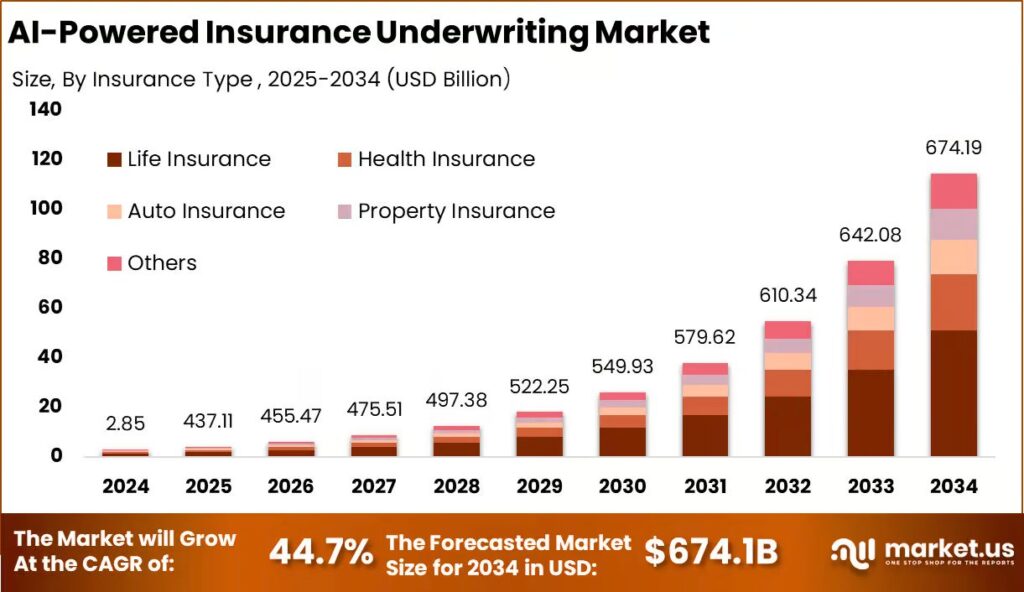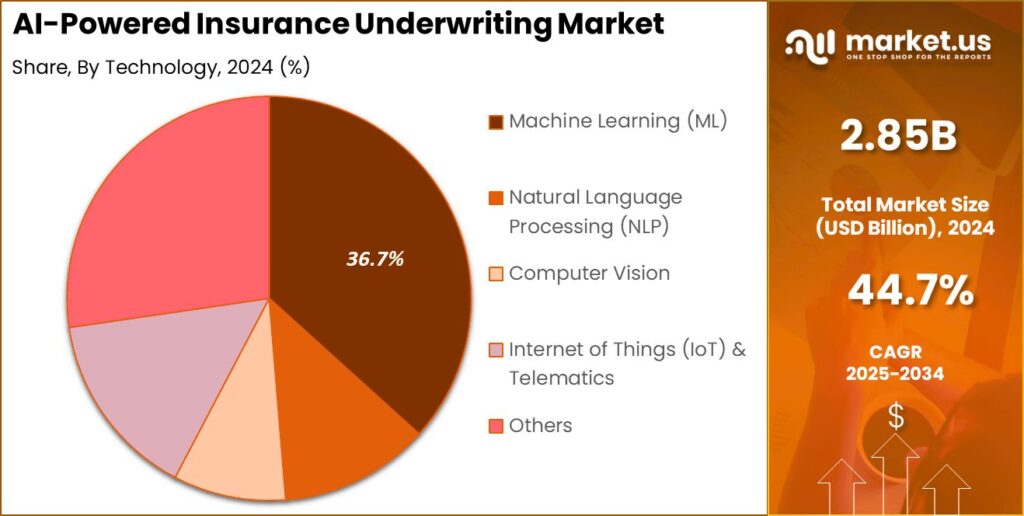The digital transformation in the insurance industry is changing how firms handle data and manage decision-making. Now, the advantage is in accessing advanced analytics with big data, large volumes of structured and unstructured data from various sources, to make smarter decisions about risk assessment and pricing. Investing in Insurance Software Development Services has become a strategic necessity for insurers, as it enables them to seamlessly integrate multiple data sources, automate complex risk assessment models, and respond quickly to emerging information. With customer expectations evolving and risks growing more dynamic and multifaceted, leveraging big data and advanced analytics is no longer optional—it’s essential for future-proofing insurance businesses and strengthening their overall risk evaluation capabilities.
Big Data in the Insurance Industry?
Big data in insurance refers to the large databases that are created from connected devices, customer activities, third-party databases, and public data. These datasets expand beyond claims and policy records and include real-time information from telematics, IoT devices, geospatial data, social media, government data, and behavior-driven data. By integrating and analyzing data sources, insurers gain insight into patterns and relationships that were previously hidden. This can better inform predictive modeling, increase automation, and provide custom experiences at scale. Through the use of strong big data frameworks, the insurance market is transitioning from static pools of risk to dynamic, more deeply segmented, and fluid risk profiles for each individual and asset.
Key Sources of Big Data for Risk Assessment & Pricing
The value of big data in insurance lies in its multiplicity, each source providing fresh perspectives on the risk and exposure that policyholders have.
Telematics & IoT Devices
Insurers are now utilizing a rapidly expanding ecosystem of connected devices which has truly transformed real-time monitoring of risk and pricing at an individual level.
- Connected cars: The foundation for usage-based insurance in auto coverage arises from telematics devices and embedded sensors gathering driving data on speed, how hard a driver brakes, route driven, and overall resident driving habits.
- Smart home detectors: Devices can alert about leaks, fires, intrusions or power surges, creating a potential to furnish property exposure-based insurers real-time information about the risk and rewards the risk-reducing activity. That real-time information underwrites risk engagement.
- Wearables for health monitoring: In health insurance software development, collaborating with fitness trackers and medical IoT devices can stream real-time data about consumers’ activity level, heart rate, and even glucose levels to support wellness-based underwriting for Health Plans, or enhance health information exchange/interoperability.
Social Media & Digital Behavior Data
The growing influence of digital footprints results in a more in-depth, nuanced understanding of customers.
- Customer insights: Their social media profiles and behavioral patterns offer detailed segmentation of customers, detection of emerging customer behaviors, and points of risk related to their lifestyles.
- Sentiment analysis: By analyzing conversations through digital platforms and through conversational reviews, insurers can better ascertain risks relating to reputational concerns, product acceptance, or identify emerging trends in unmet needs or market shifts, creating a greater accountability to be present and act on behalf of the interests of citizens all while disrupting the traditional assessment model.
Geospatial & Environmental Data
As catastrophe risks and climate trends continue to grow in their severity and unpredictability, Environmental intelligence is increasingly becoming a prerequisite.
- Flood zones, wildfire risk, crime data: Advanced geospatial mapping layers specific addresses with hazard zones to influence property underwriting and price location-based exposures accurately.
- Climate and weather intelligence: Streams of real-time data notify insurers of impending natural disasters, offer dynamic risk scoring, and facilitate intervention programs that are timely.
Transactional & Historical Insurance Data
Traditional data sources are still invaluable when amplified by big data solutions.
- Claims history and policy data: Historical losses, renewals, amendments, and endorsements contribute to predictive analytics for risk segmentation and loss-risk estimates moving forward.
- Fraud cases: AI algorithms leverage databases of past fraudulent claims to detect red flags, identify suspicious claims, and prioritize their investigative workload.
Public and Third-Party Data
- There continue to be new risk discussions from aggregating internal records with public and commercial data.
- Government databases: Datasets such as traffic reports and census data will add to the baseline risk model.
- Credit scores and industry risk databases: Financial behaviors and third-party analytics provide another lens to assess both personal and commercial insurance applicants for holistic and compliant risk analysis.

How Big Data Enhances Risk Assessment in Insurance?
Utilizing big data offers several benefits to insurers when it comes to risk assessment and pricing, from real-time responsiveness to the next generation of fraud prevention.
Real-Time Risk Insights
Big data allows for continuous and real-time monitoring of everything insured, as well as behaviors associated with that insured property.
- Constantly monitoring the risk behaviors you insure: IoT and telematics provide live updates, making it easy to know of an increased risk—such as high-risk driving behavior or health issues, creating a hazard on your property.
- On-demand underwriting decisions: With automated access to rich data streams, underwriters can approve applications or update policies instantaneously—as needed, to fit the coverage or adjust the price.
Predictive Analytics & Machine Learning
Big data can power advanced analytical tools to help insurers anticipate losses and optimize pricing while tailoring prevention strategies.
- Risk pattern identification: AI models find hidden patterns (e.g., clusters in claims from fraud, increasing health risks, or property claims at seasonal events) which could not be found by human analysis.
- Enhanced loss predictions: Predictive algorithms can take historical data, along with current data, and provide robust forecasts of expected claims frequencies and severities, resulting in low loss ratios, and ultimately improved profitability.
Enhanced Underwriting Accuracy
Data-driven risk modeling replaces general demographic assumptions with personalized evidence-based scoring.
- Automated decision making: APIs and AI systems can make instantaneous, objective decisions by cross-checking claimant data with various datasets for greater speed and assurance of accuracy.
- Data-driven segmentation of risk: Underwriters can categorize customers through fine-tuned behavioral, environmental, and portfolio factors, instead of age and zip code, which promotes more equitable and competitive pricing.
Better Catastrophe Modeling:
Big data is vital in predicting and managing the losses from catastrophic loss events.
- Weather-driven risk modeling: High-quality weather and climate data can monitor flooding, storms, earthquakes, and disperse and erratic fire patterns in real-time to maximize mitigation efforts.
- Disaster trends: Insurers use decades of environmental datasets when assessing pricing, portfolio development and claims preparations for a changing landscape of risks caused by shifts and changes of the global climate.
Applications of Big Data Across Insurance Segments
Big data facilitates innovation that is specific to the market segment, customized product development, and collectively nudges behavioral and risk-sensitive regulation of behaviors between interested parties to influence the decision taking action.
Auto Insurance
- Driving Behavior Analytics: Telematics insights reward safe drivers based on driving behavior, identify at-risk drivers, and increasingly become the core of drivers’ auto insurance policies.
- Accident Risk Prediction: Insurers use big data to assess and evaluate road conditions, traffic and personal habits to help prevent loss and, where possible, provide proactive guidance for drivers.
Health Insurance
- Wearables and Health Monitoring Data: Health insurers use wearable device and health-monitoring data via Health Insurance Software Development to assess physical activity, chronic indicators and behaviors to connect data to incentives or early interventions.
- Chronic Conditions Risk Scoring: Big data enables actuaries to score chronic conditions including diabetes and heart disease with precision, enabling early interventions and an optimized structure for coverage.
Property & Casualty Insurance
- Smart home data: Connected detectors, cameras, weather stations, and maintenance sensors, enable context-based risk alerts to be provided for personalized coverage on property.
- Environmental risk insights: Merging geospatial data with real estate attributes creates composite risk scores that outperform traditional rating methods by far.
Life Insurance
- Lifestyle-based risk score: Wearables, personal health history, and behavioral data contribute to a model of longevity and risk in real time to support instant quotes and dynamic coverage.
- Predictive longevity modeling: Machine learning uses genetic, lifestyle, and environmental data to evaluate risk more precisely than traditional life tables alone.
Final Thoughts
With the help of Big data, insurance companies understand and manage risk with a lot more convenience. In fact, it facilitates personalized pricing, instantaneous insurance underwriting, and proactive risk assessment for loss prevention across all product lines. To enable these use cases, interested companies are working with partners in custom software development services to construct scalable, integrated, and secure analytics platforms. These investments allow legacy carriers and disruptors alike to thrive in a market where measured success is defined by agility and accuracy along with the ability to convert data into value, which is fundamentally transforming insurance as defined by the digital age.



